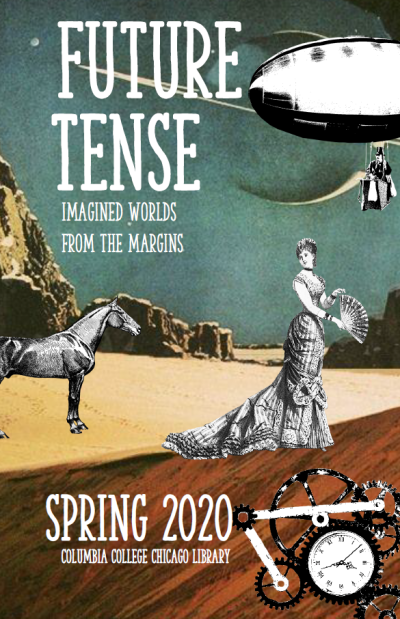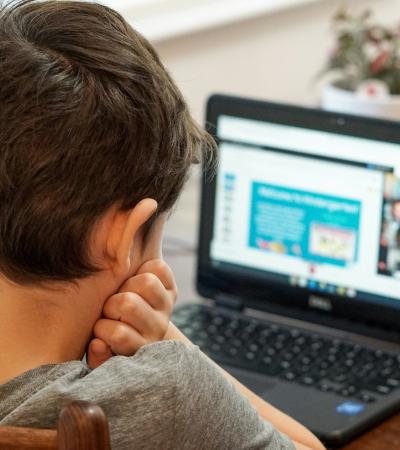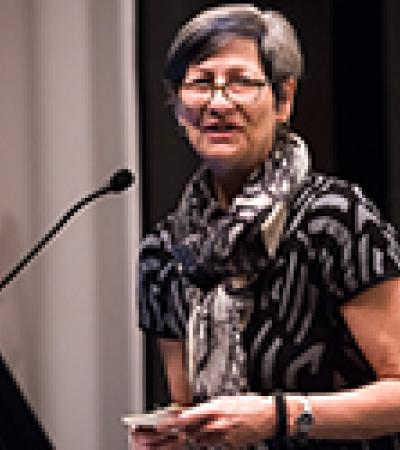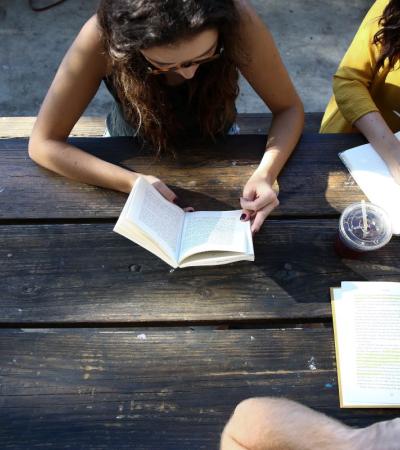Often, those of us who work in academic libraries (or maybe it’s ALL libraries) get asked the question of whether or not libraries are even a thing anymore.

For a public swimming in a highly digital culture, there is instantaneous access to search engines and online information. The public no longer sees libraries and their workers as crucial in their role as gatekeepers and guides.
In a campus environment that is increasingly taking place in a virtual world — teaching, research, social interactions — we have to ask ourselves what role do academic libraries play? And maybe more importantly, what role can they play? Surely, we must be more than shelves of books and dusty periodicals? More than databases and online resources? More than just a gathering place on campus? And yet, we find ourselves a combination of all these things and more.
Campus libraries can attest to forever seeking a delicate balance between a warehouse for materials and a living, breathing space where learning happens. We tear out stacks and reduce collections to offer more seating and collaborative workspaces, we continue to carefully curate our collections to save ever valuable physical space while still making necessary resources available to patrons. We invest in online resources available anywhere to our community members and we instruct patrons on how to use those and other resources, sometimes embedding ourselves in the classroom at the teaching level itself. But these are a complex set of answers to those who may occasionally question why a campus even needs a library when the world of information is at our fingertips.
The Aesthetics of Research
While any academic library continually re-evaluates how best to serve its population, it’s especially complicated at a place like Columbia College Chicago, a predominantly arts & media school.
While a portion of our students’ on-campus experience may include traditional research, instruction, and use of materials, much of the work they do outside the classroom is creative in scope — they are out there making films, writing manuscripts, painting, and building video games. They are putting together art exhibits or marketing themselves and other arts organizations. They are creating culture, which means their experience of the campus library is a bit different than the traditional model of academic research.
With information so readily accessible, even a more traditional university struggles to connect with students and faculty, who seem to believe they need us less than they did before given advances in teaching platforms and accessibility of information.
How do we make the campus library, particularly the arts school campus library, relevant and engaging to the student academic experience? How do we make ourselves relevant and indispensable for the next four years as they make their way through gen-eds, into their majors, and out into the world as practicing artists?
For the past five years, our Aesthetics of Research initiative has been working to forge a path that falls somewhere between traditional academic library programming and traditional bibliographic instruction—a path that encourages both community and self-directed learning. A path that bridges the student education experience and the library, not just in regard to essay writing and research applications, but also to artmaking and creative pursuits. What can the library do for YOU, an artist at the beginning of your career? How can it sustain you for a lifetime of learning and creative practice?
With our motto “connecting communities, discovering resources, and cultivating practice,” we have, over the past five years, made great headway in terms of targeted and thematic driven programming linking the artist experience to resources both in the library, on campus, and out in the community. We do this in a number of ways:
- Semesterly focus topics based around specific interests and areas of our collection.
- Targeted discussion panels, workshops, readings, and other events with an educational objective.
- Interactive displays and exhibits highlighting artist source materials and inspirations.
- Programming that connects students with peers on campus and communities of practice outside Columbia.
- Faculty collaborations that reinforce and transform classroom learning.
- Highlighting the library as one of the only truly interdisciplinary spaces on campus — a place where synergy happens between art forms in the midst of valuable resources.

Curated learning
Admittedly, over time, there was a lot of throwing things at the wall and seeing if they would stick. We worked toward further articulating exactly what we were doing and where we wanted to go.
Last summer, we adopted the term “curated learning” as shorthand terminology — that bridge that arcs between library programming and traditional instruction. We began using it to describe our mission, for the type of work that was happening under the Aesthetics of Research umbrella. It’s a phrase often, but not exclusively, used in conjunction with the practice of setting up experiences for optimal learning, i.e. those factors that are not the teaching itself, but the general experience of the classroom — the informational charts on the wall, the way the chairs are arranged, the books on the shelves.
Since much of what we do is setting the stage, within the library, for self-directed and peer-based arts learning, this seemed appropriate. “Curated learning” is also occasionally used to describe a way of presenting content, typically digital, in a way that creates an educational experience (as opposed to social or entertainment experiences).
In the context of a library setting, this applied well to our goal of making the library, not merely a support or annex to learning, but also a place where it actually happens, both in conjunction with the classroom and independently of it. It captures our desire to define ourselves, not just by the materials and resources we store and make available, or even our instruction on how to use them, but as a beating heart of cultural and intellectual life on campus via the way we connect our patrons to all those things and more.
Strategies
Once we agreed on terminology, there was still much to be delved into. Once we figured out the “what”, there was further examination of “how.” How best to translate our ideas into making the library conducive to the sort of educational experiences we wanted to offer our students and community? And how to tie potential learning opportunities to the sort of programming things already happening in most libraries, but also make those programs inextricably linked to the resources we offer.
We wanted not only to host art workshops but to build a community around the resources that make them possible and reinforce their practice. We wanted to not only offer opportunities to connect with communities of practice and like-minded practitioners, but also to center the library as a place where our resources are not simply materials and databases, but also fellow artists and creatives. We wanted to take the resources, both tangible (physical materials, online access, exhibit space, art supplies) and intangible (community and peer knowledge), and make the library absolutely integral to the campus experience of our students. As a student using the library, there are ample opportunities for self-directed learning, not only through the materials and resources we purchase and house but also in how we frame these things in context.
Our semesterly focus topics typically feature multi-modal ways of engaging a topic of interest such as exhibits and book displays, discussion panels, activity stations, film screenings, workshops, readings, and more. Our recurring series of monthly how-to workshops allow both individual and peer-directed learning, as well as connections to available resources in the library, on campus, and in the arts community. Our exhibits and displays show, in a direct way, how resources inform art practice, featuring bibliographies of sources, materials, and inspiration within the artist statements.
In an attempt to center ourselves in the campus experience, we also recognize the importance of fostering a thriving creative community within the library itself that radiates outward. With an eye toward peer learning and offering valuable teaching experience to students, we occasionally invite student artists in for demos and encourage them to participate in our discussions, exhibits, and events.
So much has been gained by looking at our role as library staff through the lens of what’s both possible and needed as the library is set amidst a thriving community of student artists. By merely opening up our pre-conceived ideas definitions of programming and instruction, we’ve transformed our way of engaging the students within the library, making the library and its offerings (both material and immaterial) as integral to a student’s campus experience as what happens inside the classroom.



